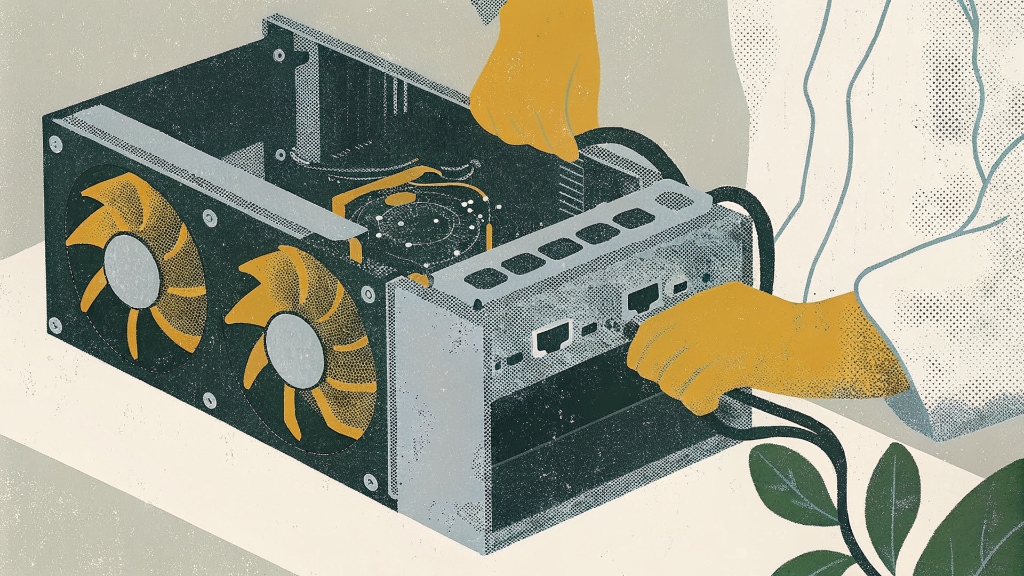
Understanding the Key Differences in Cryptocurrency Mining Equipment
Cryptocurrency mining is a complex and highly competitive process that relies heavily on computer hardware. Among the array of mining equipment, two types of hardware are most commonly discussed: ASIC computers and consumer-grade hardware such as CPUs (Central Processing Unit) and GPUs (Graphics Processing Unit). Understanding the differences between these devices is essential for anyone interested in mining cryptocurrencies efficiently or entering the crypto mining space.
Related articles
What is an ASIC Computer?
ASIC stands for Application-Specific Integrated Circuit. These are specialized computers designed with a single purpose: to perform specific computational tasks with the highest possible efficiency. In the world of crypto mining, ASICs are custom-built to execute the hash calculations required by particular mining algorithms of cryptocurrencies like Bitcoin, Litecoin, or Kadena.
ASIC computers concentrate all their computing power and hardware design on optimizing the speed and power consumption for their target algorithm. This means they operate faster, more efficiently, and use less electricity than generalized consumer hardware performing the same task.
What is Consumer Grade Hardware?
Consumer grade hardware for crypto mining includes commonly available devices like:
- CPUs (Central Processing Units): The main processing chips in personal computers, critical for everyday computing tasks but relatively inefficient for mining.
- GPUs (Graphics Processing Units): Initially designed for rendering graphics in gaming and professional applications, GPUs are also very effective at handling the parallelized computations required by many mining algorithms (such as Ethereum’s Ethash).
- FPGAs (Field Programmable Gate Arrays): Programmable chips that can be configured for specific mining algorithms, positioned between GPUs and ASICs in terms of specialization and efficiency.
These consumer hardware options are generally multipurpose devices and can handle a variety of tasks beyond mining, offering versatility at a tradeoff in mining efficiency.
Efficiency and Performance Differences
ASIC computers dramatically outperform consumer-grade hardware in mining specific cryptocurrencies. They deliver:
- Significantly higher hash rates: A key metric in mining, the hash rate measures how many cryptographic calculations a machine can perform per second. For Bitcoin, ASIC miners operate in terahashes per second (TH/s), while GPUs manage megahashes per second (MH/s)—a difference of thousands of times in raw computational power.
- Lower power consumption per hash: ASICs are engineered to optimize energy usage, making them far more power-efficient. Although ASICs still consume considerable electricity, their energy cost relative to output is much better than consumer hardware.
- Faster block solving: Faster calculations mean more chances to solve the complex puzzles required to mine a new block, increasing profitability.
Specialized Design vs. Versatility
One defining difference is specialization. ASICs are purpose-built for one algorithm and cannot be reprogrammed to mine other cryptocurrencies or perform other computing tasks. For example, an ASIC designed for Bitcoin’s SHA-256 algorithm cannot mine Ethereum’s different algorithm.
Consumer hardware like GPUs and CPUs are versatile and can mine multiple cryptocurrencies or be used for gaming, video editing, or AI applications when not mining. This flexibility gives GPUs a longer useful lifespan and potential resale value beyond mining.
Cost and Accessibility
ASIC miners usually come at a higher upfront cost than consumer-grade devices:
- Entry-level ASIC miners for Bitcoin can cost from US $1000 to over US $10,000 depending on power and efficiency.
- GPUs widely range from US $200 to US $2000 or more depending on model and performance.
However, ASIC miners tend to offer better long-term profitability for cryptocurrencies they are built for, offsetting the initial investment when mining conditions are favorable.
Consumer hardware is more accessible to beginners or hobbyists because it’s widely available, cheaper initially, and offers flexibility. Many new miners start with GPUs before considering ASIC purchases.
Maintenance and Ease of Use
ASIC miners often come with integrated mining software and user-friendly interfaces designed for straightforward plug-and-play operation. They require technical knowledge mostly for setup and maintenance, including cooling solutions and power management.
GPUs and CPUs are more manual to configure but benefit from extensive community support, tutorials, and software options. They can be used on standard desktops or rigs with adjustable settings for mining multiple coins.
Impact on Mining Decentralization
The rise of ASICs has greatly influenced mining centralization trends:
- Mining farms and large operators prefer ASICs due to better efficiency and scale, creating large-scale mining operations.
- Consumer miners using GPUs or CPUs struggle to compete profitably against ASIC farms for major coins like Bitcoin.
- This has led to concerns about centralization of mining power but has also encouraged development of alternative coins with ASIC-resistant algorithms that favor GPUs.
When to Choose an ASIC or Consumer Hardware?
- If you want to mine a major cryptocurrency like Bitcoin exclusively and profitably, ASIC miners are almost always the best option.
- If you seek flexibility to mine various cryptocurrencies or use the hardware for other purposes, consumer-grade GPUs provide more versatility.
- For beginners with limited capital, starting with consumer hardware allows entry into mining without massive upfront costs.
- Professional mining operations prioritizing efficiency, scalability, and maximum returns choose ASICs despite higher costs and lower flexibility.
Energy Consumption and Environmental Considerations
ASIC miners, though energy-intensive, often represent a more efficient use of electricity compared to consumer hardware doing the same work. Their optimized design reduces waste power expenditure and improves overall mining sustainability.
However, both ASIC and consumer mining contribute to significant global energy consumption, fueling ongoing debates about the environmental impact of crypto mining and the need for greener solutions.
Final Overview
ASIC computers are highly specialized, powerful machines built to mine specific cryptocurrencies faster and more energy-efficiently than consumer-grade hardware like GPUs or CPUs. They dominate major coin mining operations by delivering superior computational power and lower energy costs, driving large mining farms worldwide.
Conversely, consumer hardware offers accessibility, multi-coin mining capability, and additional usability outside mining, catering to hobbyists and smaller miners. The choice between ASICs and consumer hardware depends on your mining goals, capital, and the specific cryptocurrency you wish to mine.
As the cryptocurrency landscape evolves, hardware development will continue shaping mining profitability, electricity usage, and network decentralization. For anyone entering mining, understanding ASICs versus consumer hardware is crucial to making informed decisions that align with their investment and operational strategy.















